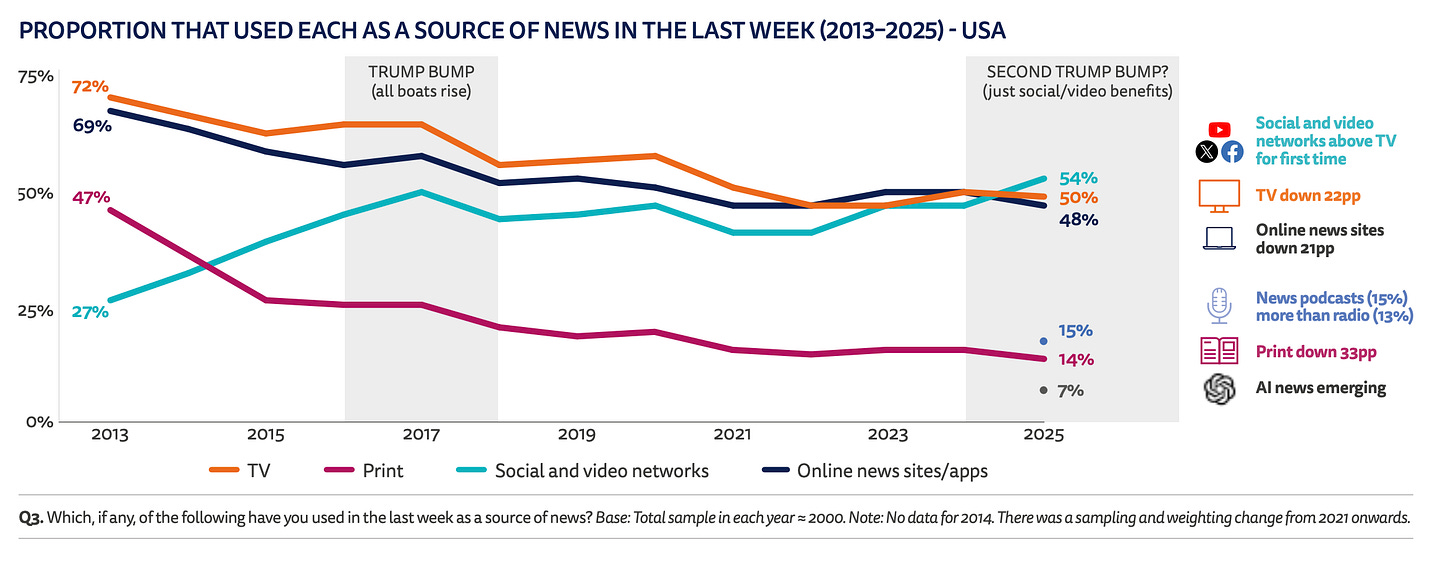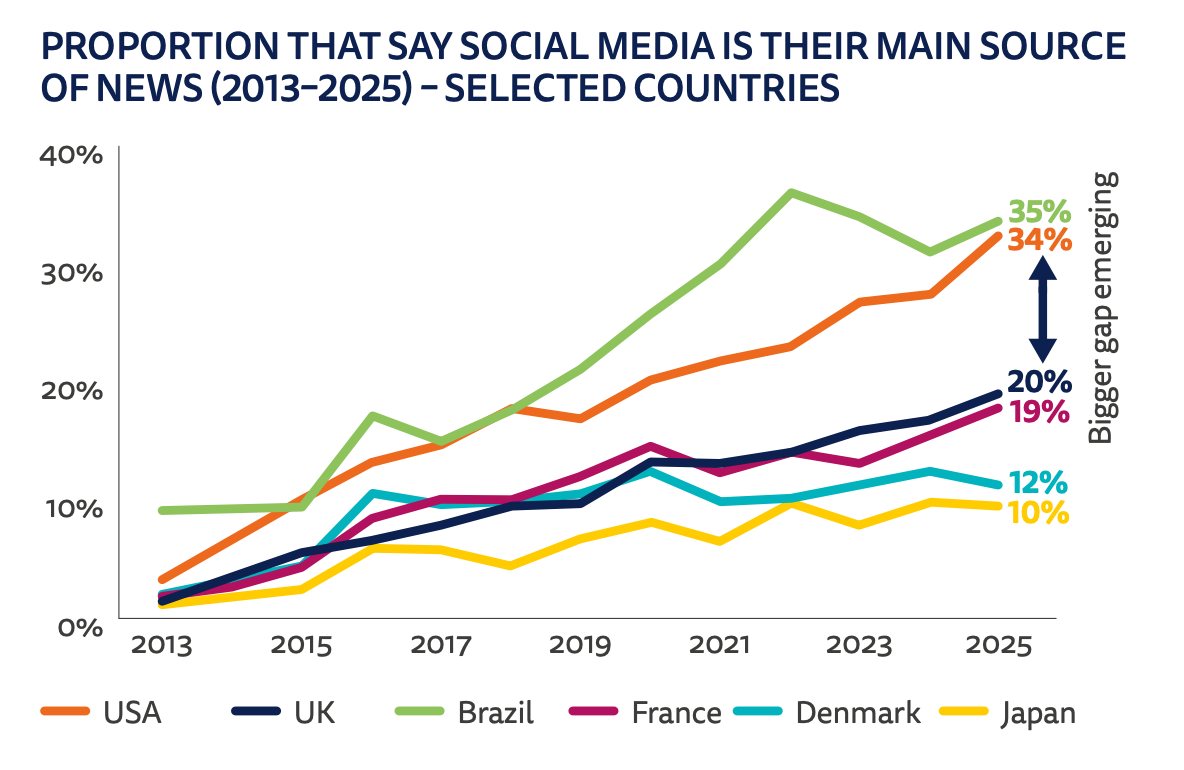Are we seeing the same thing?
Social media isn’t just warping childhood — it’s fracturing how adults understand reality
Donald Trump used to be good for ratings. From CNN to The Washington Post, Candidate and then President Trump drew eyeballs, subscribers and, critically, advertisers. This time is different.
Today, Reuters Institute published its Digital News Report 2025 and it is a doozy. The report includes 48 markets, nearly 100,000 respondents and runs to 171 pages. But here’s the top line, and prepare to have your socks well and truly remain intact: engagement with traditional media sources (television, print, news websites) continues to fall, while social media (including video and online aggregators) grows.
So, TikTok is the fastest growing social and video network, AI chatbots are emerging as a source of news while legacy publishers struggle to diversify revenue streams. But I want to focus for a moment on a particular element of the report: the divergence between traditional and social media in the second Trump term.
Between 2016 and 2020, there was something of a ‘Trump bump’ which, as the report notes, raised all boats (or perhaps merely delayed their sinking). Viewers flocked to social and video networks, but news websites, TV and print also rallied. The Washington Post saw digital subscriptions peak at 3 million in January 2021, while CNN had a damn good insurrection. But under Trump 2.0, fortunes have diverged.
Perhaps unsurprisingly but no less importantly, these shifts have been turbocharged by younger cohorts. More than half of Americans under 35 years of age (54% of 18-24s and 50% of 25-34s) say that social and video networks are their primary source (up 13 and 6 percentage points respectively from the previous year). But the report reveals that all age groups are following a similar trend, with traditional media the fall guy.
Both presidential candidates seemed to reflect this to a greater or lesser extent during the 2024 campaign, with Trump in particular taking to the platform. Forbes compiled a list of all those that Trump appeared on and how many views they racked up, and we are talking something in the region of 100 million.
Indeed, Reuters’ report finds that an astonishing 22% of Americans said they had come across the podcaster Joe Rogan discussing the news in the previous week. As you can see below, those with the largest footprints tend to skew right-wing.
Note not only the large number of people watching, but also who is watching: that is, the sort of people that legacy media simply is not reaching. To quote the report:
Some of the most popular personalities over-index with young men, with right-leaning audiences, and with those that have low levels of trust in mainstream media outlets, seeing them as biased or part of a liberal elite.
Is America the future? The rise of a news media landscape that is social and personality-based is scarcely a US-only phenomenon. But the country is clearly ahead of peer nations such as the UK and France while Denmark and Japan lag far behind.
It is difficult not to conclude that this is having an impact on US politics. We are living in an extraordinary moment of technological change. It is taking place in a period where citizens exhibit declining faith in government, media and other institutions. Whichever way causation flows, the danger is obvious. Great technological disruption — from the printing press to the radio — has historically been followed by death and destruction.
The future remains contingent. While authoritarian regimes used the wireless radio to hideous effect, Franklin Roosevelt used it and his fireside chats to bolster public trust and support for his policies, first to combat the Great Depression and then defeat fascism in Europe.
Of course, what makes algorithmic social media different is that everyone is a content creator, free to broadcast wild and baseless conspiracy theories that once traditional media acted to keep off the air. These are now pervasive. And no one sees the same thing. I can buy two copies of the same newspaper, while millions of people can watch the same edition of the BBC News At 10, but no two TikTok feeds are alike.
I will end, as all newsletters would if I had my way, with a quote from the historian Stephen Kotkin:
We always disagree on what the truth is. But now we have a problem with the truth regime. The truth regime is how we determine the truth: evidence, argument, proof. But that truth regime has been destabilised. No one has the truth alone, and we should argue about the truth. But we used to have a consensus on how we got to the truth and how we recognised truth. Not anymore.







I realise that this will sound a little basic when discussing such complex issues. But I wonder if streaming services are also an issue. At a very basic level, 10 years, when I came home I would just turn the telly on, sometimes the news was on and Id watch it. Now when I turn it on, the first thing I do is select a service and then a show. I know sounds basic but not sure the last time I watched the news on telly